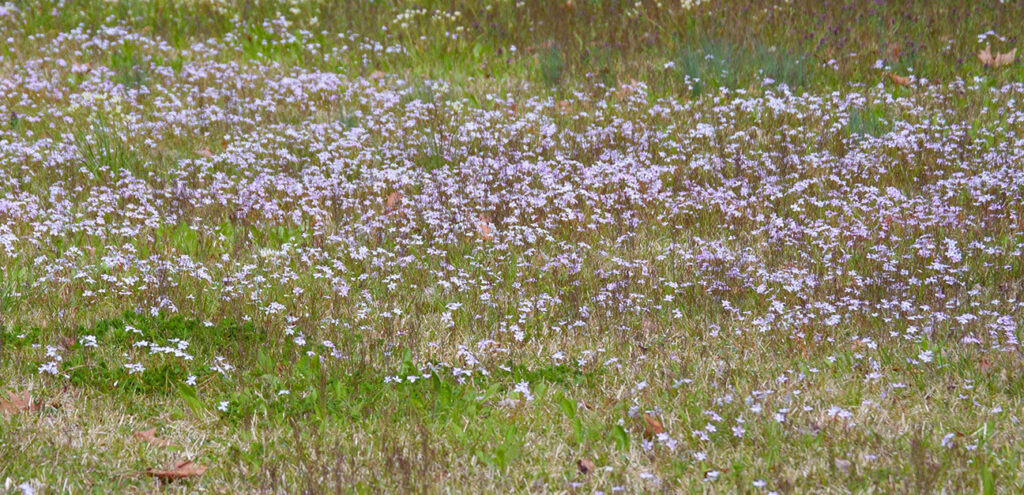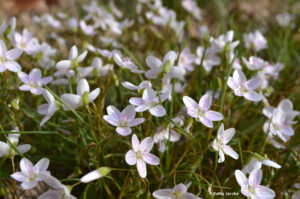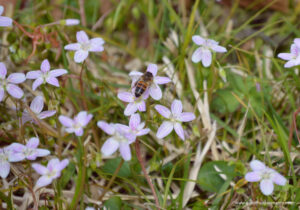
When I reach my limit with the bleakness of winter and cold temperatures, the tiniest pink striped flowers start to poke their heads out of lawns and ditches. To me, the Virginia spring beauty (Claytonia virginica) is a harbinger of spring and warmer weather.
These wildflowers bloom just before the false garlic – so they fill up the lawns and ditches before the taller flowers begin to grow leaves and bloom.
In mid-February, these tiny beauties pop up – first one at a time, then in large clusters. The flowers will remain closed on cloudy days but shine in the full sun.
Growth and Range of Spring Beauties
Grown from an underground tuber, these tiny flowers have narrow grass-like leaves. The flowers are pale pink with darker pink stripes and a dark pink pistil. The plants grow to be around 3 to 4 inches in height. They are small but striking.
In Mississippi, they are common in lawns with wetter soils in full sun and part shade. You can also find them in ditches. Spring beauty is native to the eastern U.S.
Wildlife Food Source
Bees love this early blooming flower, and you’ll find honey bees, bumblebees, and others buzzing along from flower to flower. Small mammals will dig up the corm and eat it, and some mammals will feed on the leaves.


